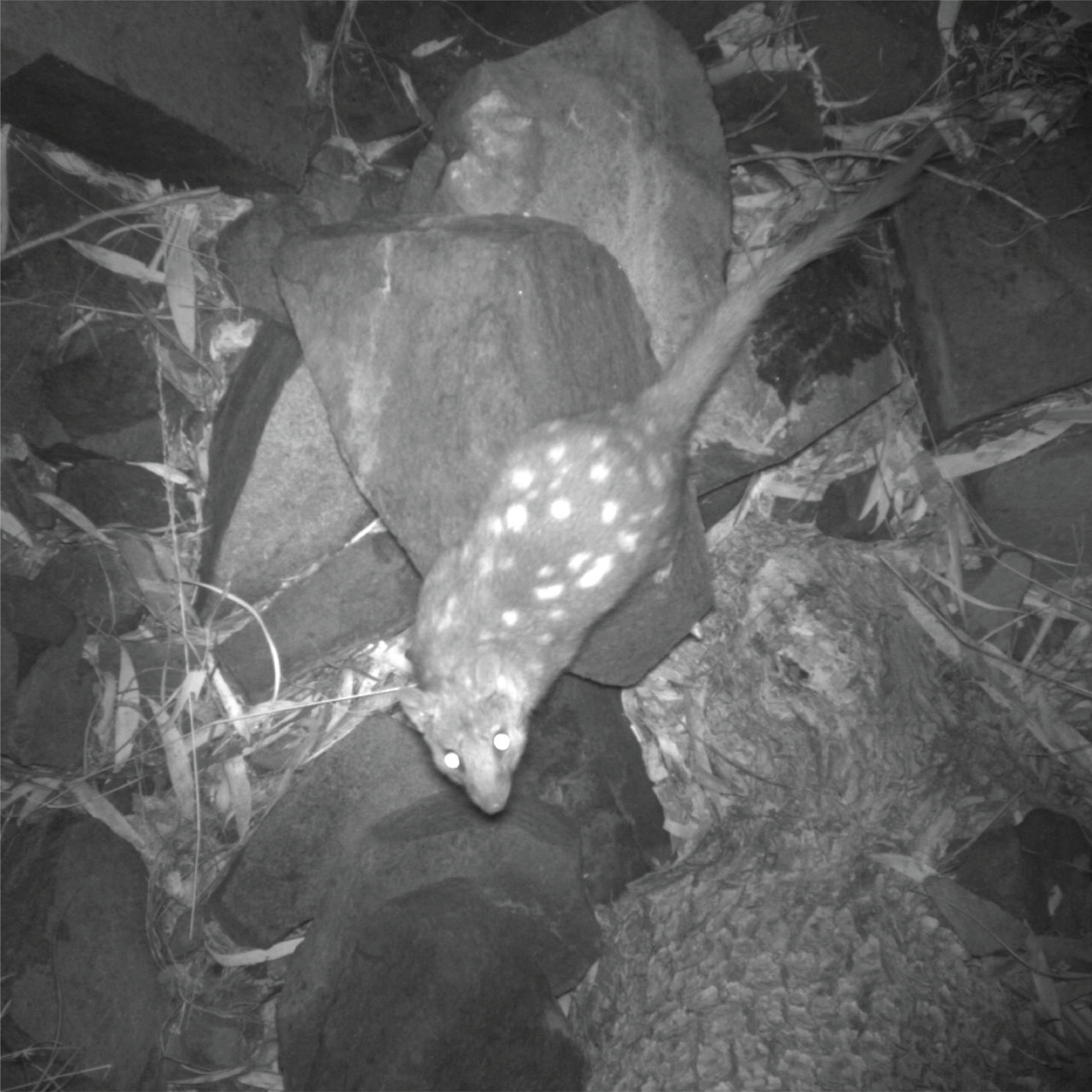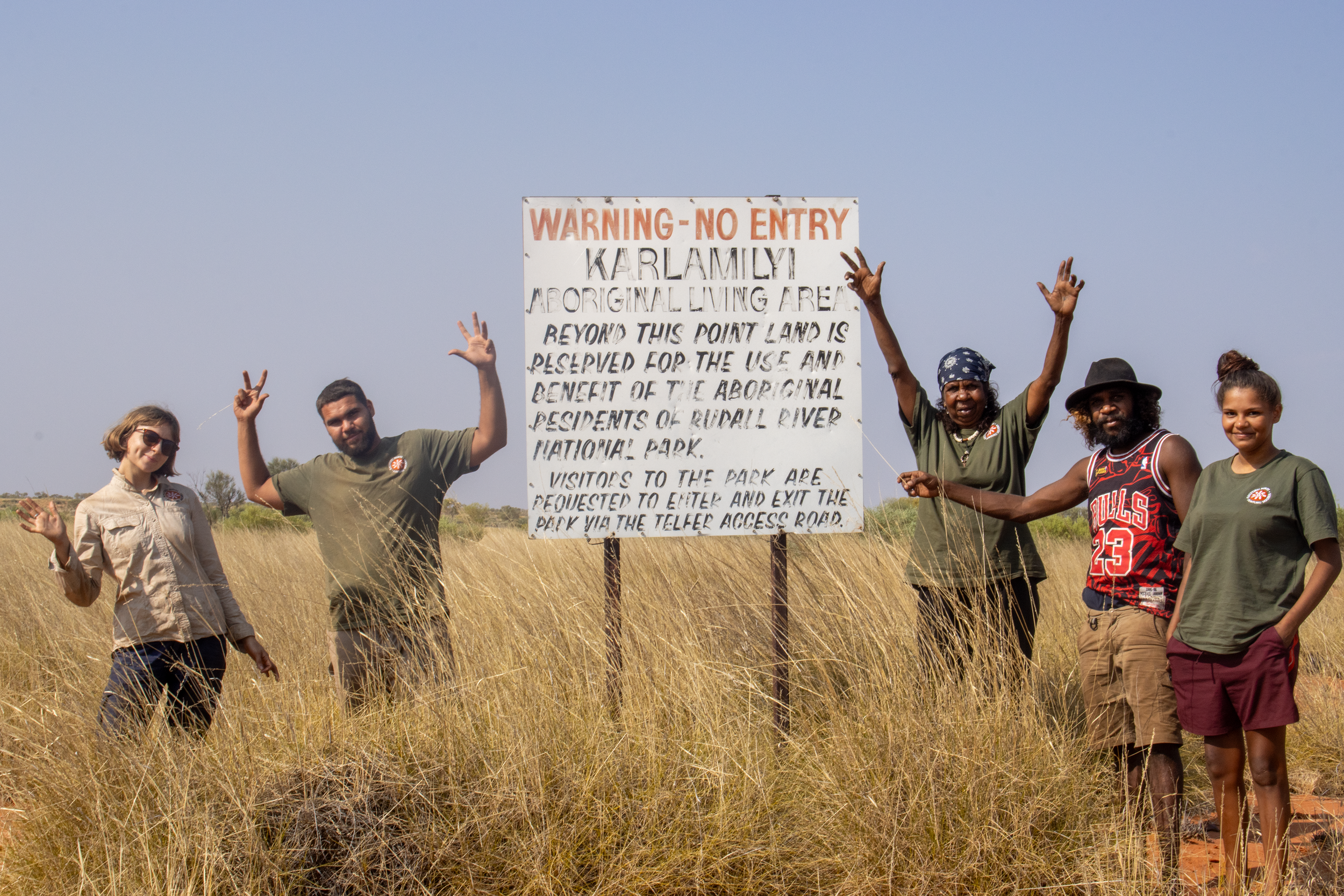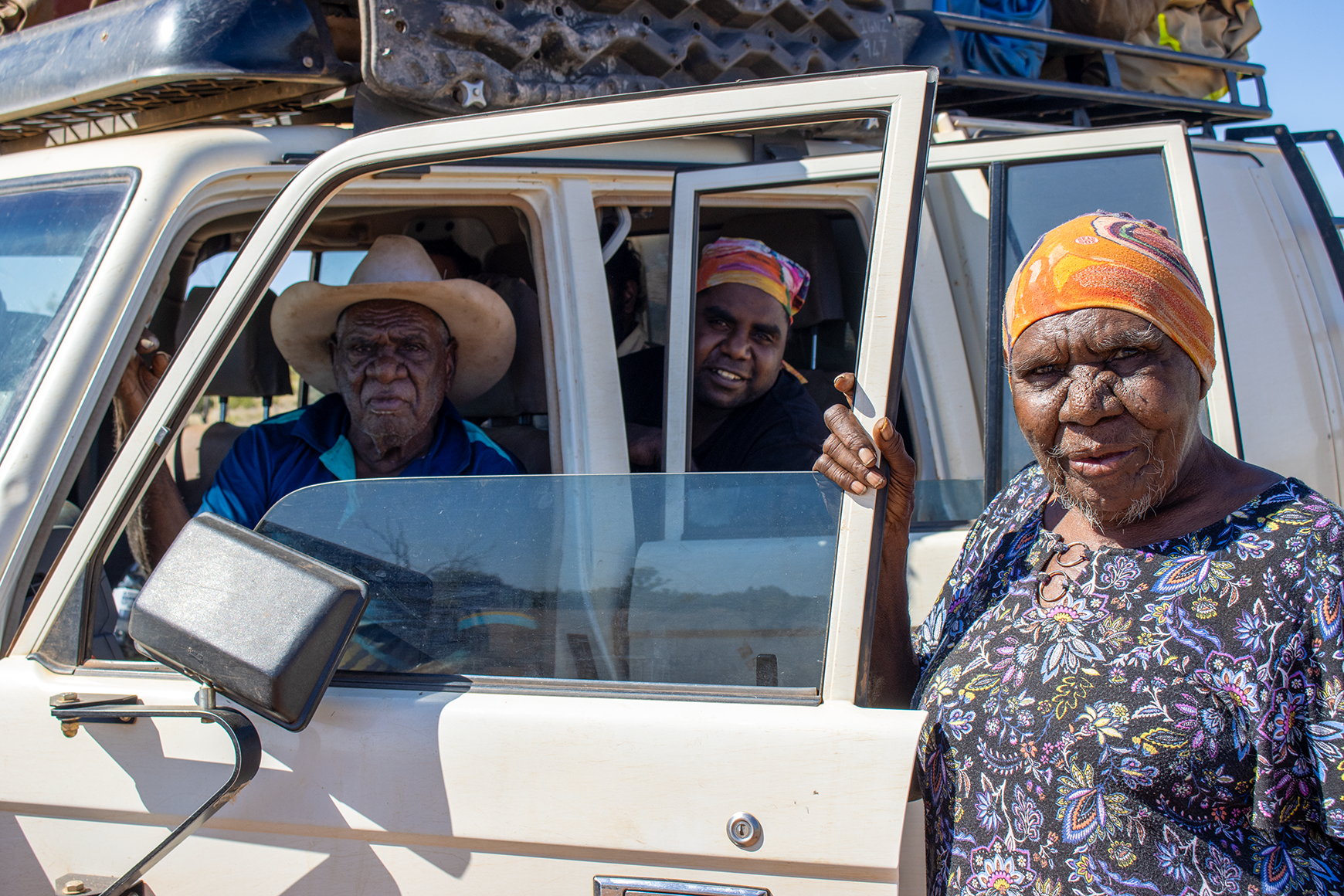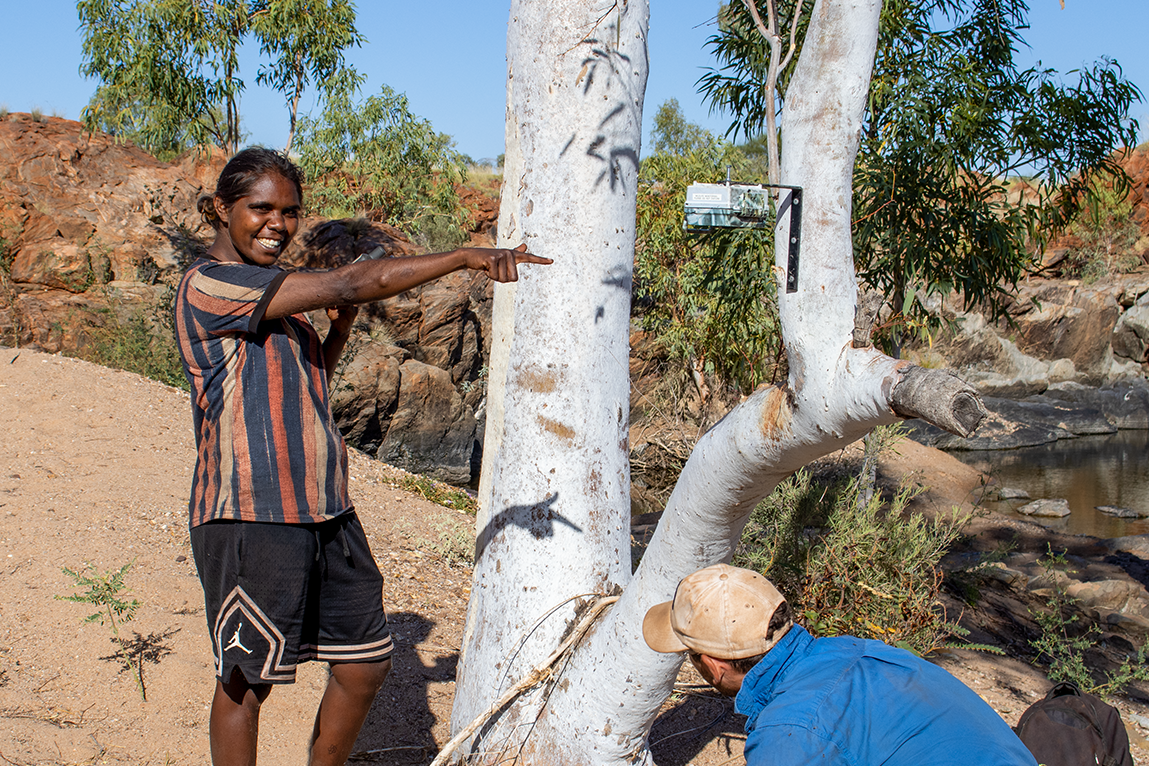A glimpse into the life of the elusive wiminyji (northern quoll)
Karlamilyi National Park is the largest and most remote national park in Western Australia. It spans across vast and captivating landscapes, providing a safe refuge for numerous iconic and threatened species. The park plays a crucial role in protecting habitats for these species, which is vital for their survival. Among them is the elusive wiminyji, or the northern quoll (Dasyurus hallucatus).
The presence of wiminyji within Karlamilyi was first documented by Western science in 2012. This led to a collaborative effort between Parks and Wildlife Service WA (DBCA) and Martu Elders and Rangers to study these intriguing creatures. The partnership brought together traditional pujiman (desert-born) knowledge of the species' habitats and behaviour, Martu bush skills, and modern monitoring techniques to shed light on wiminyji in the park and assist in their conservation. Two wiminyji monitoring sites were established in Karlamilyi National Park in 2022 for long-term observation as part of this collaboration.
During a visit to the monitoring sites to perform camera checks and maintenance, our Parnngurr Rangers were delighted to discover that the remote sensor cameras had captured images of wiminyji. These images provide a rare opportunity to observe and learn more about these marsupials in their natural habitat.
Wiminyji, the smallest of the four Australian Quoll species, used to roam across northern Australia. Sadly, their population has significantly declined, and they are now classified as an endangered species nationally and internationally. Under the cover of darkness, they emerge from their dens, ready to embark on their nocturnal adventures. Their sharp instincts and versatile hunting skills allow them to thrive as generalist predators, feasting on a diverse menu that includes invertebrates, small mammals, reptiles, birds, carrion, and fruit. In the Pilbara, they find refuge in rocky habitats that offer shelter from predators and fire. Elders remember wiminyji being historically abundant in the rocky areas of Karlamilyi Park and the surrounding Martu Determination Area, highlighting their significant importance in the landscape and Martu culture.
📸's: Wiminyji (Northern Quoll) captured on a remote sensor camera in Karlamilyi National Park; Healthy Country Officer Matilda and Parnngurr Rangers (l-r: Mason, Carol, Cowboy (Jayden), and Louise) checked and maintained cameras at wiminyji monitoring sites in Karlamilyi National Park; Muuki, Corban and Nola during the 2022 trip to establish wiminyji monitoring sites. The insights shared by Muuki and Nola, both pujiman (desert-born) and other Elders, were crucial in establishing the sites and strengthening the younger generations' connection and responsibility to care for these unique marsupials; Parnngurr Ranger Jerryanne learning about camera installation with Dr Harry Moore from DBCA in 2022; Punmu Ranger Julie-Anne installing Quoll tracking camera in 2022.





